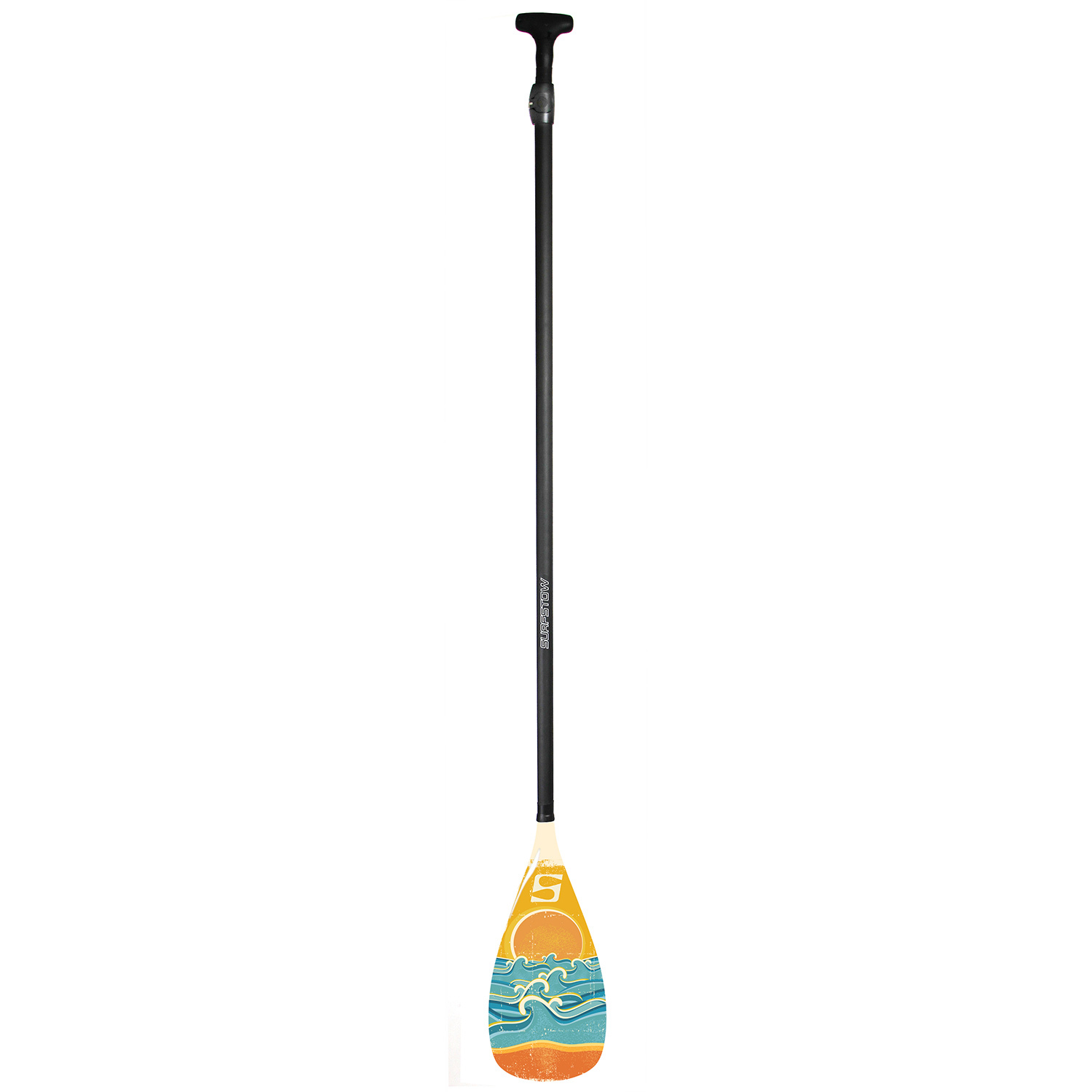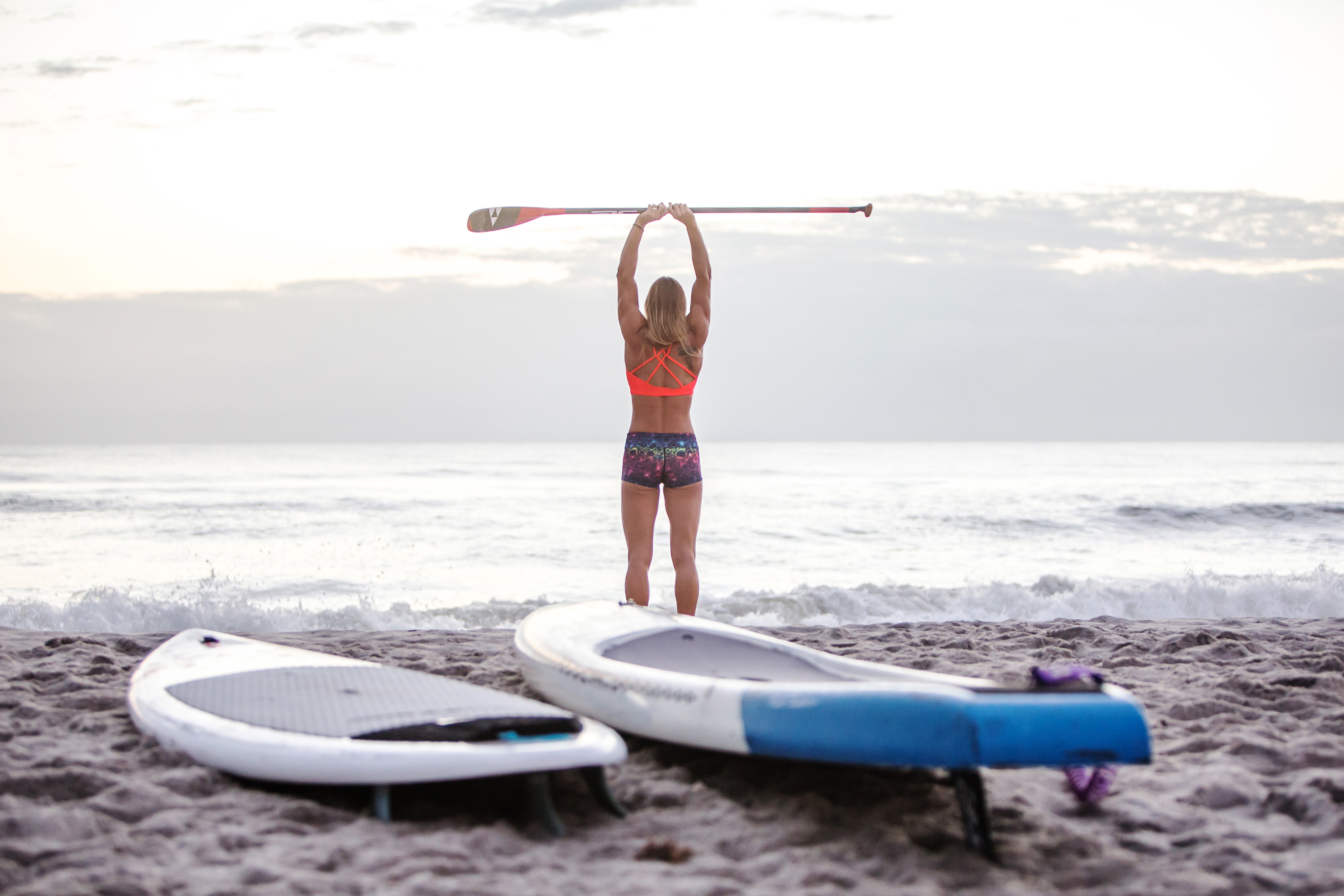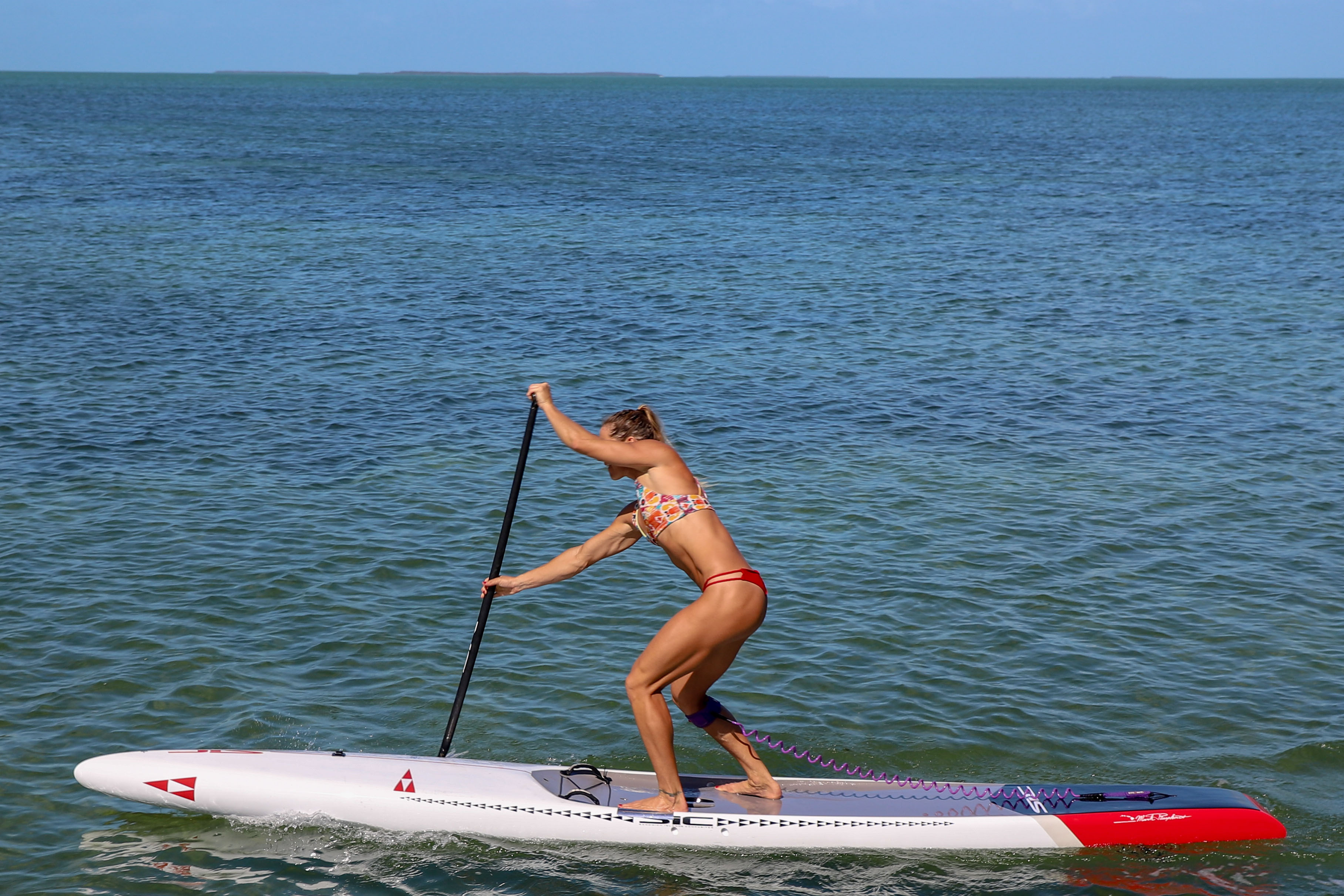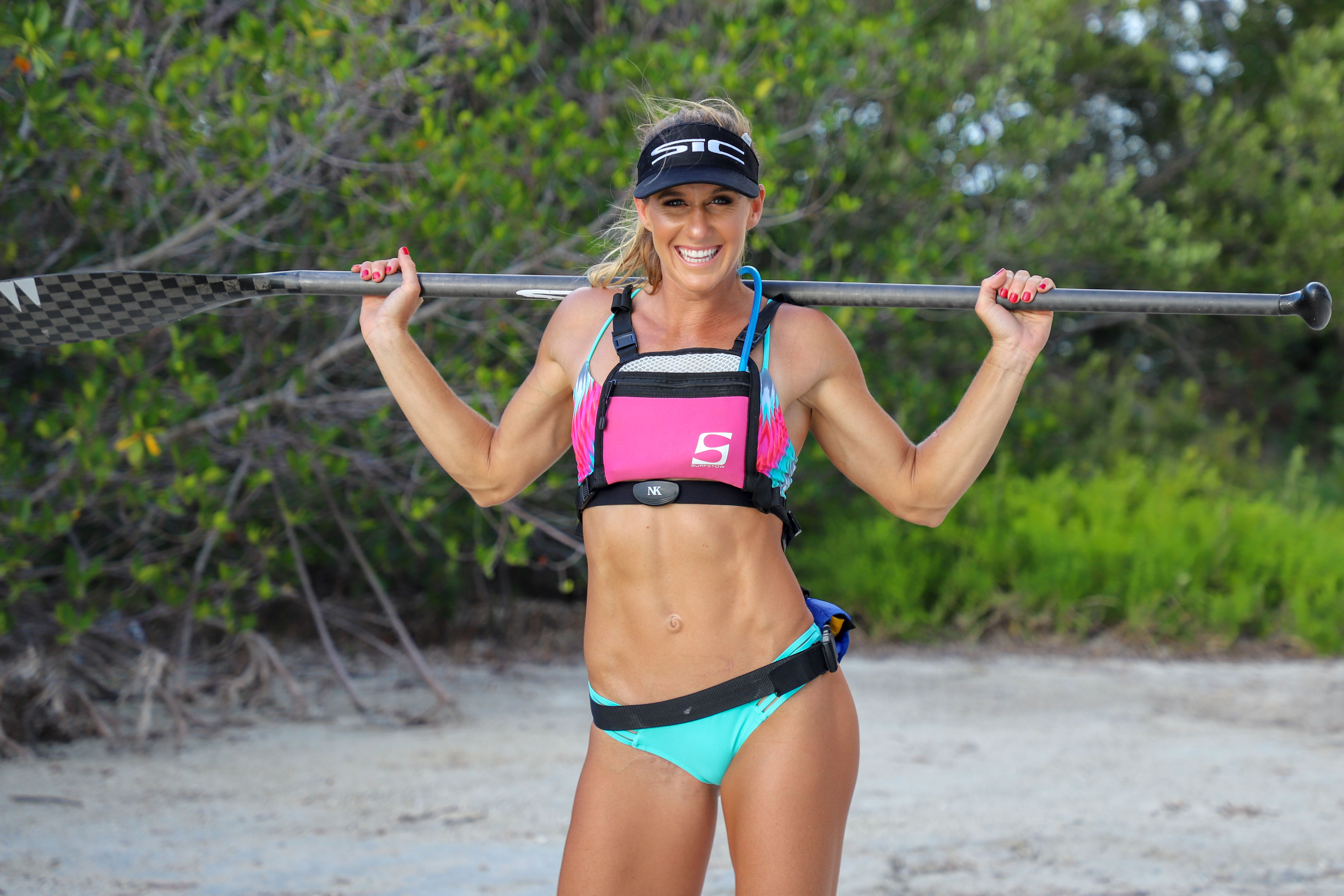
Using a paddle of the correct length can make a big difference on how your body feels after a session out on the water. Too tall and your shoulders might be talking to you. Too short and your back can get strained. Optimum paddle lengths vary from person to person based on body proportions and stroke technique.
For Beginners

Adjustable paddles are a good choice for beginners and are a great choice for sharing with friends and family.
Before moving to a fixed-length paddle, beginners should use an adjustable paddle. As a coach, I ask beginners to raise one arm above their head and adjust the paddle’s length so that the handle is at the height of their wrist. This is about 10 inches above their head. Then I will make additional adjustments as needed while out on the water. What I am looking for is that they are fully submerging their paddle blade into the water with each stroke. If this is difficult for them, I might make the paddle a little longer to help facilitate getting that extra depth to their stroke.
For Experienced Paddlers
For experienced paddlers, a more appropriate paddle length is four to eight inches above head height; which is a lot shorter than the longer paddle length for beginners. Most experienced paddlers use a carbon fiber paddle that is customized for length. So if you are an experienced paddler and want to determine exactly how long your paddle needs to be, here is what I suggest: Use an adjustable paddle that is as similar in size and shape to your fixed-length paddle as you can find and do some testing with that paddle to determine the optimum length. Your paddle’s length will need to compensate for your board’s height above the water, paddling technique, shoulder position and how your back feels.
Board Height

The board on the right with a "dugout" deck requires a shorter paddle than the one on the left.
Do you own your own board? How many inches above the water do you stand on your board? If the board has a flat deck, you probably stand four inches above the water. If it has a sunken or dug-out deck, your feet are maybe only one or two inches above the water. Take this into consideration. The higher you are out of the water, the longer your paddle will need to be.
Paddling Technique
Do you bend your knees while you paddle? (You should.) Bending the knees gives you a stronger foundation from which to propel your board. It also means you will need to shorten your paddle’s length to your adjusted height with bent knees.
Shoulder Position

Paddle selection should take into account that proper paddling technique requires that you bend your knees. Photo courtesy ReLiveIt Global.
Does your shoulder get all torqued up when you paddle? Perhaps you need to shorten your paddle an inch to protect your shoulder joint. Ideally we want the arm to be reaching straight out from the shoulder when the paddle is loaded up.
Go easy on your back!
Does your back often hurt or get really tight after you paddle? (The coach in me wants to tell you to bend your knees and keep your chest up.) Maybe your paddle should be a smidge longer to help you keep your back straighter while you paddle. For example, my paddle is only four inches above my head, but I bend my knees a lot when I paddle and my board has a sunken deck that is only a couple of inches above the water where I stand. When I first started paddling, my paddle was eight inches above my head, then six inches and now it is just four inches above my head.
SUP surfers need an even shorter paddle.
For SUP surfing, use an even shorter paddle that rises one to four inches above your head for all of the same reasons as above. A SUP surf board is only one inch out of the water and you will need to get down low to catch those waves. Adjust your paddle accordingly.
Pain-Free Paddling
If you are getting out on the water often and it is hurting your body, your paddling technique is probably incorrect. When done properly, SUP is a low-impact sport that is great for your body. Repetitive stress issues do arise, but more often than not can be fixed by altering your stroke technique to alleviate what is causing the problem. Consider taking a lesson or clinic with an experienced coach who can help you paddle correctly and pain free!
About Myself

I was born and raised in the Florida Keys and have always had a deep connection to the water. I hold a USCG Masters license and for 8 years after school, I sailed around the world as a professional yachtsman. In 2013 I discovered stand-up paddling and moved back to Florida to pursue a career in this sport. With a lot of hard work and dedication, I am now a top 10 world ranked athlete, Guinness World Record holder for long distance*, and the 2016 Fastest Paddler on Earth. I am also a paddle coach, a registered yoga instructor and certified personal trainer. I offer clinics for all level paddlers. My classes and programs are a blend of the diverse coaches, styles and techniques I have practiced—and are a journey to cultivate strength, energy, endurance, balance, and bliss within our bodies. I am passionate about life, fitness, nutrition, love, and having fun. I believe that anything is possible and if you believe it, then it’s true.
*Editor's note: Seychelle paddled a total distance of 110.47 miles to set the female Guiness World Record for the greatest distance covered by a stand up paddleboard on flat water in 24 hours. She achieved this on December 5-6, 2015. Witnesses reported that at 5 a.m., fifteen hours into the attempt, Seychelle was singing as she passed the checkpoint. To learn more about Seychelle’s accomplishments as a competitor, SUP Yogi and adventurer, check out seychellesup.com